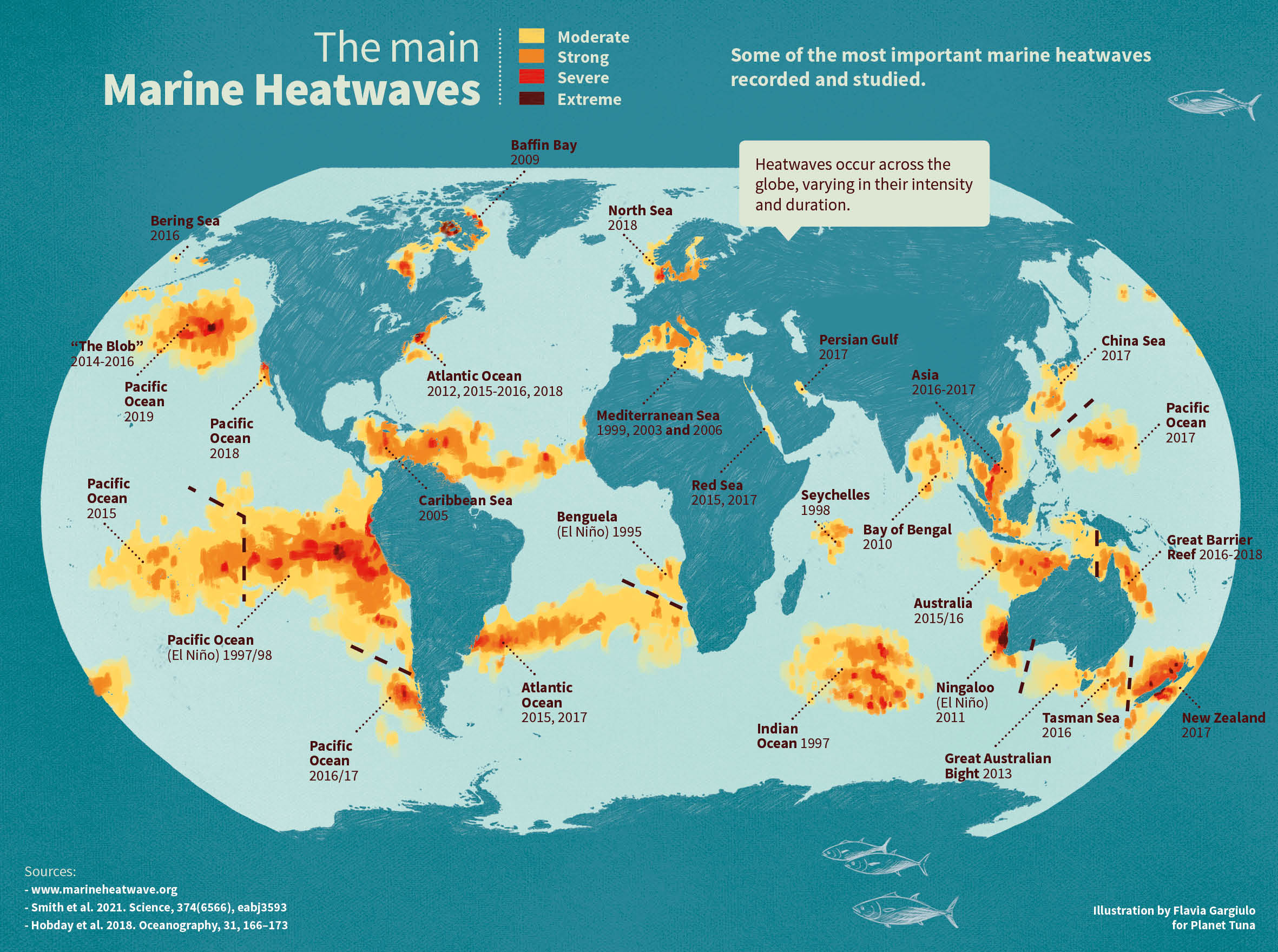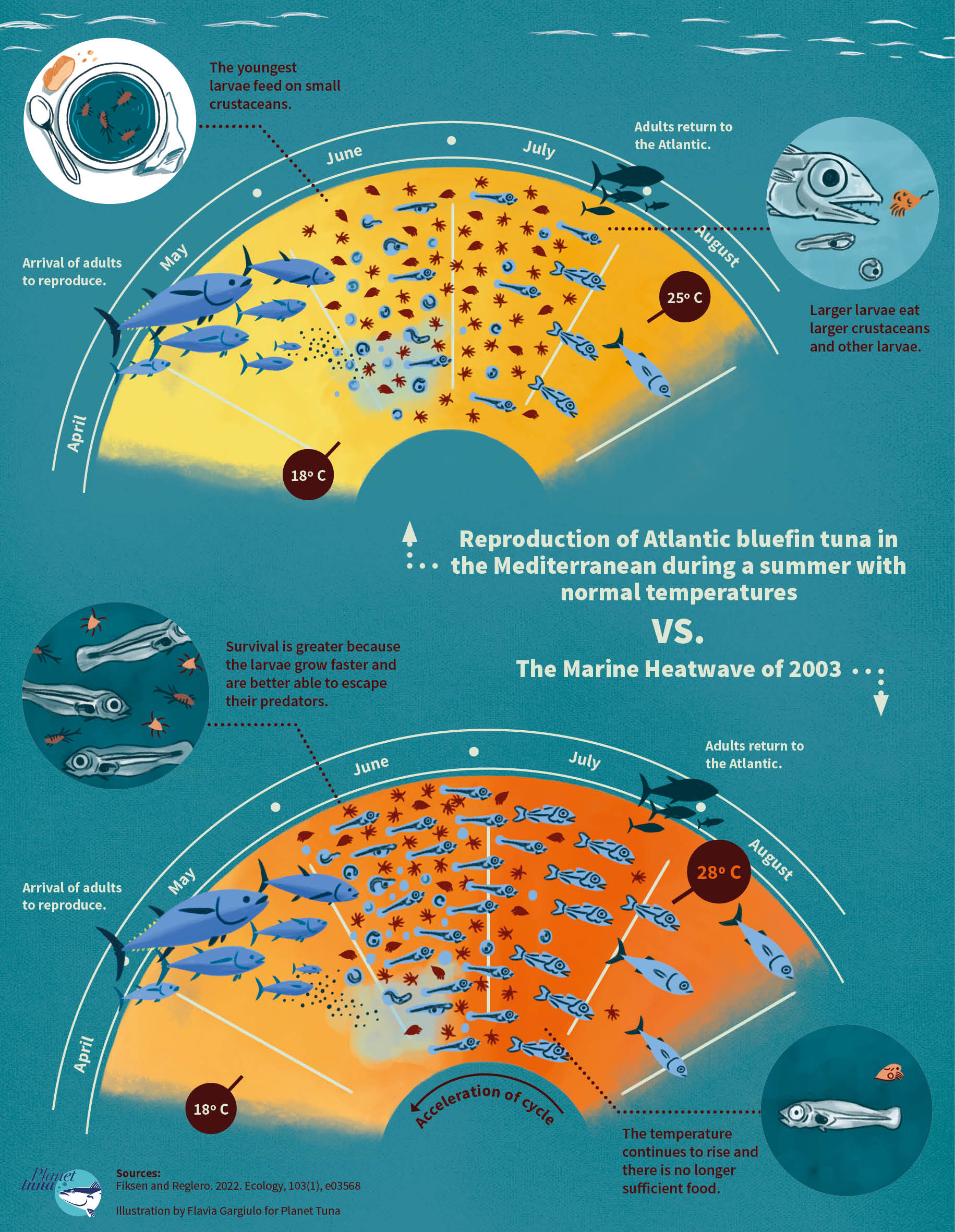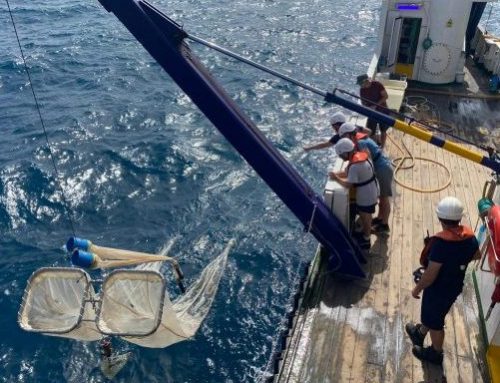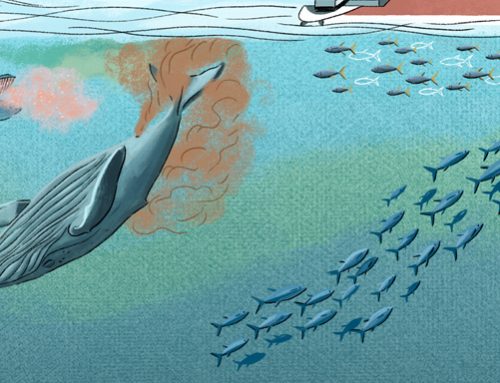What is a marine heatwave and how does it affect life in our oceans?
________________
Author: Maria López, Journalist
The media often talk about heatwaves. And you have probably already experienced at least one yourself. Heatwaves are usually illustrated with images of thermometers showing temperatures in the 40s, and of people cooling off in public fountains. These are atmospheric heatwaves but heatwaves can also occur in the sea.
In this article we are going to talk about what are called marine heatwaves – where there is a rise in the temperature of ocean waters – and of their consequences for marine life in general and for tuna in particular.
The general public are far less familiar with marine heatwaves than they are with the heatwaves that occur on land. And there is not much scientific literature available about the phenomenon, either. Research in this area is in its early stages but one thing is clear: such events are becoming more frequent.
What is a marine heatwave?
A marine heatwave occurs when the water temperature is between 3ºC and 4ºC higher than average, compared to reference values recorded over at least the previous 30 years. This increase in temperature must last for a minimum of five days for it to constitute a heatwave.
Higher seawater temperatures are not as frequent as higher atmospheric ones. This is because it takes a lot of energy to heat the waters of our oceans by 3ºC or 4ºC. A marine heatwave sometimes coincides with an atmospheric one, but this is not always the case.

Illustration by Flavia Gargiulo for Planet Tuna
Why do marine heatwaves occur?
As we have noted, it takes a lot of energy to heat the water in our oceans. And there are lots of factors that can contribute to the occurrence of a marine heatwave. However, these factors do not operate in the same way or have the same importance for each event.
This having been said, there are two major causes of marine heatwaves: ocean currents, causing warm water to accumulate in specific areas; and the flow of heat from air to sea, so that the atmosphere causes the surface of the ocean to warm. The action of the wind may exacerbate or counteract the rising water temperature.
The world’s most famous marine heatwaves
One of the most famous marine heatwaves occurred in the Mediterranean Sea in 2003. In this case, the rise in temperature was caused by an unusual flow of heat between the air and the sea. High air temperatures, caused by an atmospheric heatwave, combined with low wind speeds.
This heatwave lasted for about a month, from mid-June to mid-July 2003, and was one of the first such events to be documented.
The Western Australia Marine Heatwave occurred in 2011. In this case, it was caused by the displacement of an ocean current, causing the water temperature to rise.
Finally, we should mention the Northwest Atlantic Marine Heatwave, which occurred in 2012 when an atmospheric heatwave combined with the unusual behaviour of an ocean current.

Illustration by Flavia Gargiulo for Planet Tuna
A phenomenon that is on the rise
Marine heatwaves have become more frequent, more extreme and longer-lasting. But research into them is in its infancy, and even the concept itself is relatively new.
The negative effects of marine heatwaves include coral bleaching, the tropicalization of fish communities, the loss of oysters, lobster and crabs, and of kelp forests. Heatwaves can also cause mass beaching of marine mammals and seabirds.
However, some sea life can benefit from heatwaves, as happened with Atlantic bluefin tuna during the Mediterranean heatwave of 2003. Let’s look at the impact of this event on this species in more detail.

The Mediterranean heatwave and its impact on tuna
There is some evidence that the recovery of Atlantic bluefin tuna is linked to the extraordinary survival rate of individuals born in 2003, and that the heatwave contributed to this recovery. But how?
Water temperature, the availability of food, and the absence of predators for their young are key to tuna reproduction. Although adult tuna can live in a very wide temperature range, their eggs and larvae can only survive in warm water, above 20ºC with low numbers of predators.
The relationship between water temperature and food
Tuna frequent the seas around the Balearic Islands in June and July both because of the water temperature and because of the quantity of food available for their larvae. The warmer it is, the greater the metabolic needs of the larvae, and this means they need more food. So the warm water must also contain sufficient food.
What happened during the 2003 heatwave in the Balearic Islands?
The Mediterranean heatwave began on 14 June 2003, coinciding exactly with the tuna spawning season, and lasted for 31 days.
In normal years, the average water temperature is 21ºC in June and 25ºC in July. However, during the 2003 heatwave, June temperatures reached July levels. As a result, the larvae that hatched in June had an advantage. Because the water was warmer, they grew more quickly and this reduced the length of time during which they were at risk from predators. Their faster growth meant they were able to swim faster, and this gave them a better chance of evading their pursuers. The higher survival rate of larvae that hatched earlier that year meant there was an abundance of adults.
The larvae that hatched in July did not enjoy the same good fortune. They also encountered warmer water – about 28ºC – but this did not benefit them. The water temperature was so high that there was not enough food to satisfy their energy requirements, because their metabolic rate also rose with the temperature. If the higher temperature had been matched by increased amounts of food, the heatwave could have been positive for all larvae hatched during the reproduction window.
The essence of the heatwave is that larvae that hatch earlier benefit while those that hatch later suffer, when compared to the average temperature cycle. The warmer water during spawning and hatching leads to faster growth and thus lower predation during the early stages of life, when the larvae are small and are vulnerable to predators. Later in the season, higher temperatures mean that the metabolic needs of the larvae outstrip what they are able to eat.

Illustration by Flavia Gargiulo for Planet Tuna
A research challenge
Scientists from the Spanish Institute of Oceanography and the University of Bergen are conducting a number of studies into the effect of temperature and food on the survival of tuna larvae. Performing such experiments is very difficult because there are so many variables to take into consideration.
The 2003 heatwave is an example of a positive effect on the survival of tuna. However, the impact of temperature cannot be evaluated in isolation. An increase in temperature that is not associated with an increase in the availability of food could lead to very different outcomes. Tuna can spawn in ocean deserts to reduce predation, but the larvae also run the risk of starving to death, particularly if it is very hot. In the future, everything will depend on how flexible tuna are when it comes to selecting when and where they reproduce.
You can find more information about marine heatwaves at:
Author: Maria López
Illustrations: Flavia Gargiulo
References
Fiksen and Reglero 2022. Atlantic bluefin tuna spawn early to avoid metabolic meltdown in larvae. Ecology, 103 (1). e03568.
Hobday et al. 2016. A hierarchical approach to defining marine heatwaves. Progress in Oceanography 141: 227-238
Holbrook et al. 2020. Keeping pace with marine heatwaves. Nature Reviews Earth and Environment 1(9): 482-493
Juza et al. 2022. Sub-regional marine heat waves in the Mediterranean Sea from observation: long-term surface changes, sub-surface and coastal responses. Frontiers in Marine Science, 785771
Oliver et al. 2018. Longer and more frequent marine heatwaves over the past century. Nature Communications 9: 1324





